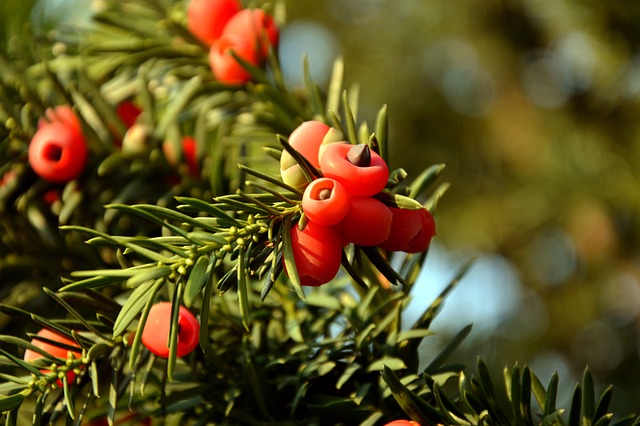 In Latvia, in the wild, the yew can be found in the coastal area of Kurzeme, but you should know that the yew is a very rare tree and it must be protected. Moreover, the tree is very slow-growing and grows no more than 1 m in 10 years. Therefore, when we meet a yew in the wild, we do not touch it. This tree is also very sensitive to the surrounding environment and even small changes in it can affect this tree severely. Let's say, even without help, it is not too easy for this tree to live with us.
In Latvia, in the wild, the yew can be found in the coastal area of Kurzeme, but you should know that the yew is a very rare tree and it must be protected. Moreover, the tree is very slow-growing and grows no more than 1 m in 10 years. Therefore, when we meet a yew in the wild, we do not touch it. This tree is also very sensitive to the surrounding environment and even small changes in it can affect this tree severely. Let's say, even without help, it is not too easy for this tree to live with us.Yew is a slow-growing conifer or a dense shrub. The root system of this tree is well developed, so it adapts relatively easily to different living conditions. The skeletal branches of the tree are vertical and go straight up. The shape of the crown is ovoid, multi-peaked (for a tree) and cup-shaped (for a bush).
The bark is thin, red-brown in color, with exfoliating plates. Yew leaves are linear, compressed, leathery, located on short petioles. Yew is usually a dioecious tree. Male cones are round, solitary, sitting in leaf axils, on the underside of the shoot. The female generative organs are arranged in the same way! The seeds are covered with a fleshy, juicy red shell - arillus or cotyledon, cup-shaped, 5-8mm in diameter.
The yew ripens its fruits in season, they fall in autumn and are carried away by birds. All parts of the plant, except the seed coat, are poisonous.
For medicinal purposes, the needles and berries of the tree are collected when they are ripe. The collected is dried in a shady and well-ventilated place. Store in a hermetically sealed container away from sunlight. Important! Store separately from other medical drugs!
Yew needles contain alkaloids, taxine, ephedrine, diterpenoids, lignans, taxiresinol and its derivatives, anthocyanins, steroids, sesquiterpenoids, sequoiaflavones, ginkgetin.
Medicinal significance
Although the needles of the plant are not recognized in official medicine, the taxane alkaloids contained in it are used in antitumor cytostatic agents. Used to treat lung cancer, cancers of the entire digestive tract, breast cancer, prostate cancer, ovarian cancer, skin cancer, and during hormone therapy.
In folk medicine, needles and wood are used as preparations with tonic and abortifacient effects. In the past, scientists used a decoction of needles to be used externally for the treatment of rheumatism, gout, mycosis of the skin, various dermatitis, as well as scabies, amenorrhea, bronchial asthma, diarrhea, bronchitis, and diseases of the urinary system.
Scientists, as a rule, do not recommend using this plant orally!